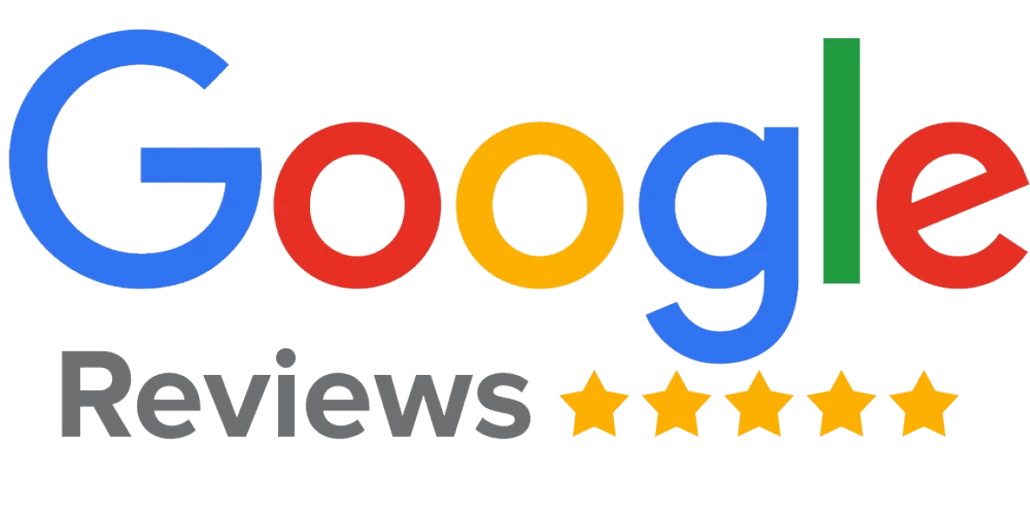10-Step SaaS SEO Checklist For Optimal Website Growth In 2024

While all SaaS companies want visitors from search engines, very few make it to the top. If you’re not visible on Google’s first page, you’re not even in the game of organic SaaS business success. The best way to get predictable results with SaaS SEO is by maintaining a checklist that checks everything necessary. We’ve created just that for you, with first-hand experience helping SaaS businesses reach their goals.
So, let’s get you a sneak peek into the SaaS SEO checklist that we used to skyrocket SaaS products, just like yours.
Why SEO Is Valuable for Your SaaS Business
Let’s start with the “why” of SaaS SEO before diving into the “how.”
According to Internet Live Stats, Google processes an average of 99,000 queries per second. It means your potential customers are constantly looking for information. Just imagine the potential reach for your business if you can secure a top spot in search results. More visibility means more traffic to your website. It’s crucial for brand-building.
Moreover, increased website visits lead to more high-quality leads. It will result in more subscriptions, sales, and ultimately, higher profits.

Source: Search Engine Land
As you can see, SaaS SEO provides lasting benefits without the need for expensive paid advertising. It allows you to conserve your marketing budget. The beauty of SEO is that once you’ve established your strategy, it continues to drive customers to your business over time.
Difference Between Traditional SEO And SaaS SEO
Before diving into our SaaS SEO checklist, let’s understand what sets traditional SEO apart from SEO for SaaS companies.
Here’s a comparison table to give you a quick look over:
| Aspect | Traditional SEO | SaaS SEO |
| Goal | Get users, and convert them to customers | Generate and nurture leads, establish authority |
| Customer Lifecycle | Shorter, sales-focused | Longer, focuses on education and retention |
| Content Strategy | Drives sales | Educates on industry, pain points, and product benefits |
| Content Format | Broader (blog posts, landing pages) | Leans towards educational resources (e-books, guides) |
| Focus | Short-term sales | Long-term customer relationships |
| Authority Building | Not a primary focus | Aim to become an authority on user pain points |
| Quality vs. Quantity | Emphasis on quantity of keywords | Emphasis on providing high-quality value |
| Relationship Building | Secondary focus | Primary focus on building strong, long-term relationships |
SaaS SEO is not like regular SEO. It’s a long-term approach. Instead of just selling, it’s about guiding people through their journey. This means creating helpful content that builds trust.
While technical SEO is still important, good content is the main focus. SaaS SEO helps grow loyal customers over time by focusing on building strong relationships.
10-Step SaaS SEO Checklist for Online Success in 2024
Things are always changing in the world of SEO. That’s why it’s important to have a plan for your SaaS website. And, today we’ll share the plan in the form of a checklist. It includes a list of things that you need to make sure your site is easy to find on search engines. SEO isn’t just about writing content. You also need to focus on things like off-page SEO and technical stuff.
But don’t stress! Just follow this 10-step SaaS SEO checklist, and your website will be in good shape. Let’s start! Shall we?
1. Do an SEO Site Audit
SEO site audit is like checking the health of your site. It’s similar to giving your car a checkup before a road trip. An Ahrefs study indicates that 95.2% of sites have 3XX redirect issues, which can confuse search engines and hurt rankings.
If your site isn’t optimized properly, search engines might struggle to find and show your pages to users. Thus, you could miss out on valuable organic traffic and potential sales. With SEO audits, you can easily identify issues that might be hindering search engines from finding and indexing your website. So auditing first saves time and money in the long run.
What the Audit Looks At:
- Technical Health: This includes analyzing how search engines crawl and index your site, and uncovering potential issues.
- On-Page Optimization: It evaluates elements like title tags, meta descriptions, and content for optimal SEO practices.
- Off-Page Optimization: Check your backlink profile, looking for opportunities to build quality backlinks that enhance your website’s authority.
- User Experience: A user-friendly website is crucial for SEO. The audit assesses factors that might be hindering user experience.
- Content Quality: It analyzes keyword usage and identifies low-quality or duplicate content. This helps ensure your content is valuable to users and search engines.
- Tracking and Analytics: Setting up proper tracking allows you to measure the success of your SEO efforts.
Remember, SEO audits are essential not just for SaaS companies, but for all types of online businesses. An audit guides your efforts efficiently for better long-term results.
2. Analyze Your Competitor
Competition is part of the game. It’s healthy when you learn from it. There’s no shame in knowing what your competitors do well and not so well. Because it helps you improve in the long run. Analyzing your competitors’ SEO is vital. It shows you what works and what to avoid.
Conducting a Competitor Analysis for SEO:
Competitor analysis is key to a successful SEO strategy. Here’s how to make competitor research work for you:

Source: HubSpot
- Identify Competitors: Start by finding your direct and indirect competitors who target the same audience.
- Website & SEO Structure: Analyze their website structure, design, content, keyword usage, mobile responsiveness, and overall SEO approach.
- Keyword Usage: Uncover the keywords driving traffic to their sites using SEO tools.
- Backlink Profile: Analyze the quantity and quality of their backlinks to understand their link-building strategy.
- Social Media Presence: Evaluate their social media activity, engagement, and how they integrate SEO into their social strategy.
- Content Analysis: Assess their content quality, format variety, update frequency, and target audience relevance.
- SWOT Analysis: Compile your findings into a SWOT analysis to identify their strengths, weaknesses, opportunities you can exploit, and potential threats.
- Develop Your SEO Strategy: Create a winning SEO strategy. Target new KWs, improve site SEO, build backlinks, create better content, and refine your social media approach.
According to Statista, the SaaS market is expected to reach $230 billion by 2024. Competition is inevitable, but you can choose to make it healthy.
Don’t forget that, SEO is dynamic. So, regularly revisit your competitor analysis to stay ahead of the curve.
3. Audience Analysis
This step is crucial, especially for SaaS companies with customers who are serious about buying. Unlike a restaurant, where people quickly decide, SaaS customers take time to decide. Some SaaS users buy soon after discovering a product, while others need more convincing. They may interact with multiple touchpoints and marketing channels.
Your SEO and overall marketing success depends on understanding your audience. Here’s how you can effectively perform audience research:

Source: Semrush
To learn about your potential customers, look at who’s already buying from you and how they interact with your website. Check social media for what people say about your brand. Use tools to get deeper insights and talk to customers to understand their needs. Once you know your ideal customer profile (ICP), plan your marketing funnel and content strategy.
4. Keyword Research
When people search online for your product or service, they type questions into the search box. This starts their journey from discovering your brand to deciding whether to buy.
Keyword research is essential for SEO. It helps find words to use in your website content, URLs, and more.
Types Of Keyword:
In SaaS SEO, there are four types of keywords:
- Informational keywords: used for gathering information, like ‘national tea day’ or ‘burger calories’. They establish authority on a topic.
- Transactional keywords: prompt action, like ‘buy crypto’ or ‘download X software’. Paid ads targeting these can boost sales.
- Commercial keywords: used to research products or services, like ‘X software reviews’. Brands create content such as reviews or comparisons.
- Navigational keywords: brand names or specific terms leading to a particular website, like ‘YouTube’ or ‘MailChimp’.

Source: CXL
There are multiple ways to find out keywords. You can use the SEO pyramid framework to find the right keywords. It helps categorize keywords based on search volume and purchase intent.
- Top of the Pyramid: Fewer searches, but people searching here are more likely to buy (high intent).
- Bottom of the Pyramid: Many searches, but people are just learning or browsing (low intent).
The key is to create content that covers all areas of the pyramid. Make content for all pyramid levels to engage buyers throughout their journey, boosting ROI.
5. Consider the Funnel Stages
The B2B buying journey has shifted. Today, research is king. Forbes says, 70% of buyers are well on their way to a decision before contacting a company.
Here’s where your SEO shines: Targeted content becomes your secret weapon to keep potential customers engaged throughout their journey.

Source: VMG Studios
The key? Funnel marketing paired with your SEO pyramid. Here’s how to make a winning funnel marketing strategy:
- Map Keywords to Funnel Stages: Use your SEO pyramid keywords and align them with the stages of your sales funnel (awareness, consideration, decision).
- Content for Every Step: Create content that caters to buyers at each stage, nurturing their interest and guiding them through the funnel.
- Identify Content Gaps: Analyzing content through the funnel lens reveals areas for improvement. It helps in optimizing your strategy to capture leads and drive conversions.
When optimizing a SaaS website, consider the Awareness, Consideration, and Decision stages of the funnel. Use SEO to deliver content to users at each stage. Informative content creates awareness and highlights the need for your product. For consideration, provide case studies or use cases. Satisfied customers become your brand advocates. They can bring in referral business and promote your product on social media.
6. Fix Technical SEO Errors
Technical SEO is crucial for your website. It involves improving loading speed, site security, and more. These things make sure your site meets user and search engine needs. Your SEO audit should have already looked at many technical aspects. Any issues found should be fixed first. Site navigation is just the start.
Other things like page loading speed and mobile responsiveness are important too. Here are more technical SEO components:
- Check for duplicate content errors
- Identify crawl and index errors
- Submit XML sitemap to search engines
- Review your robots.txt file
- Resolve Canonicalization issues
- Optimize images and media
- Check for broken links or 404 error pages
- Optimize site speed
- Address issues from Google Search Console
- Add and fix schema markup
Also, choose a reliable web host like Hostinger, Bluehost, or SiteGround to keep your site running smoothly.
Technical SEO involves more than just a few tasks—it’s hard work. Yet, it’s crucial for your SEO success. Regular technical check-ups ensure your site stays error-free as you add new content.
7. Fine-Tuning On-Page SEO
Even the best content needs a little help to be seen by search engines. Here’s where on-page SEO comes in! It focuses on optimizing your website’s content and elements to improve user experience (UX) and search engine ranking.
Think of it like this: Great content is like a delicious meal, but if it’s hidden in the back of a dark restaurant, no one will find it.
On-page SEO makes your content easy to find for both search engines and users. Here’s a checklist of key on-page SEO elements to keep an eye on:
- Titles & Headings: Clear titles & headers.
- Meta Descriptions: Short, informative summaries.
- Keyword Volume: Use relevant keywords naturally.
- Images: Optimize with alt text & filenames.
- Page URLs: Clear & reflective of content.
- Links: Internal & external linking.
- Page Loading Speed: Ensure fast website loading.
Remember, on-page SEO is about the small details that add up to big results. Pay attention to these elements. Together, they’ll help your website stand out and attract more visitors.
8. Build Authority With Off-Page SEO
On-page SEO optimizes your website itself, but off-page SEO focuses on building your website’s reputation and authority in the wider online world.
Off-page SEO is like building trust and getting positive recommendations. Here’s how off-page SEO helps your website:
- Backlinks: These are links from other websites pointing to yours. Search engines see backlinks as a sign of trust and relevance, potentially boosting your ranking.
- Brand Mentions: Positive mentions of your brand online, even without links, can improve your search engine ranking and brand awareness.
- Social Media Engagement: Actively engaging on social media platforms helps build brand recognition and potentially drives traffic back to your website.
Off-page SEO is a marathon, not a sprint. Building a strong online reputation takes time and consistent effort. Yet, the payoff—boosted traffic and better rankings—is invaluable.
9. Content Optimization
Let’s talk about getting quick SEO wins with content optimization! Use the keywords you discovered in your research.
In this tactic, you can improve existing website content for higher traffic. Here’s why content optimization works:
- Target the Right Keywords: Optimize content for keywords with good traffic potential but manageable difficulty. It opens a chance to rank well without extreme competition.
- Show Your Expertise: Focusing on relevant keywords allows you to showcase your knowledge. Credibility is key in the technical world of SaaS.
- Prioritize Based on Your Audit: Recall the SEO audit you conducted earlier. Use that info to identify content that needs improvement.
- Streamline Your Content: Remove outdated or irrelevant content. Let your high-performing content shine. This will boost your website’s overall health.
Content optimization based on keyword research and prioritization is a powerful way to score quick SEO wins!
10. Focus On E-E-A-T
To meet Google’s content quality guidelines, focus on E-E-A-T: Expertise, Experience, Authority, and Trustworthiness.

Source: Search Engine Land
This means:
- Expertise: Show you have the necessary knowledge.
- Experience: Prove your authority with relevant experience.
- Authority: Establish credibility through site and topical authority.
- Trustworthiness: Ensure content is trustworthy with citations and helpful information.
While there’s no specific score, following E-E-A-T can improve content quality. It is effective, especially in YMYL (Your Money, Your Life) industries. Consider E-E-A-T in your SEO checklist, particularly for SaaS in health or finance niches. It will work like a wonder.

Final Words
So what’s the takeaway? SaaS SEO requires time and effort. Without experience, you might overlook crucial steps, harming your campaign. Don’t be discouraged! Follow the steps outlined in this checklist, and you’ll be well on your way to achieving your SEO goals.
SaaS SEO may seem like a daunting task! But, consistent effort and a commitment to high-quality content will pay off in the long run. Over time, you’ll notice improvements in website traffic and brand recognition. Focus on the small wins, celebrate progress, and don’t be afraid to adapt your strategy as needed. With dedication and the right approach, you can conquer the SEO landscape and establish your SaaS brand as a leader in its field.



